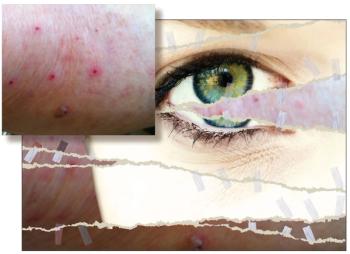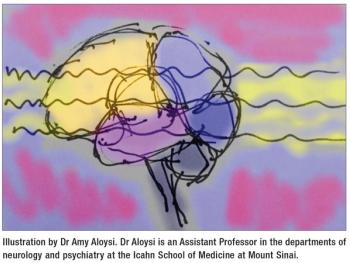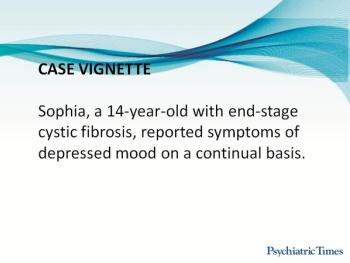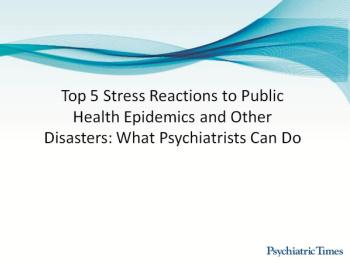
We present the case of a patient for whom different attending providers had markedly different interpretations. As the case unfolds, we invite you to reflect on your diagnostic understanding of each presentation.

We present the case of a patient for whom different attending providers had markedly different interpretations. As the case unfolds, we invite you to reflect on your diagnostic understanding of each presentation.

Delusional parasitosis can be difficult to recognize, but timely diagnosis and psychiatric treatment can improve quality of life and reduce medical costs.

What therapy is considered the "gold standard” in treating childhood and adolescent depression? Find out in this quiz,

A case report of an acute, transient, reversible depression prompts us to think in a different way about depression.

Metabolic syndrome may be a particularly important marker of antipsychotic metabolic effects.

Some recent breakthroughs, using newly developed neuroscience investigational tools, suggest that if research resources are available, we could soon make substantial advances in understanding the mechanism of action of ECT.

This is usually one of the first questions asked by patients and their families following a psychotic episode, suicide attempt, or manifestation of any serious mental illness. More from the Director of NIMH.

This case of a 14-year-old female patient with end-stage cystic fibrosis illustrates the psychiatrist's critical role in ensuring quality end-of-life care.

Do persons with depression and a history of early life trauma benefit more from psychotherapy or pharmacotherapy? Take the quiz and learn more.

The articles in this Special Report address suicidal behavior in the context of the role of sexual identity, the effects of antidepressants and lithium on suicidal behavior, and clinicians’ reactions in the aftermath of suicide.

As an occupational hazard, preparing for the possibility of patient suicide will help the clinician anticipate the types of support that our colleagues or we may need to weather the event.

Are suicide rates higher or lower during holidays such as Thanksgiving and Christmas? Take the quiz and learn more.

Psychiatrists should be playing a key role in end-of-life decisions as well as, not coincidentally, in pain management.

What percentage of patients hospitalized for depression eventually die by suicide? Learn more in this quiz.

What percentage of depressed patients are resistant to treatment with conventional antidepressant medication?

This article summarizes 5 cases from consultation services at several teaching hospitals. These challenging cases illustrate several points for the consultation/liaison psychiatrist to consider in caring for elderly hospitalized patients.

Clinicians will likely encounter increasing numbers of older adults with late-life depression. Advances in our understanding of the neurobiology can help inform diagnosis and prognosis.

Whether by traditional means or via cyberspace, bullying and peer victimization put adolescents at increased risk for suicide, especially when comorbid psychopathology is present.

People experience a spectrum of reactions as a result of epidemics, such as Ebola, and disasters, such as weather-related events. Psychiatrists can provide interventions for those who are in distress with a special focus on mitigating these disaster stress reactions.

Patients with severe depression are more likely to have symptom remission with a combination of cognitive therapy and antidepressant medication than those with less severe or more chronic illness.

In this video, Dr Andrew Solomon talks about how psychiatrists and psychologists can help depressed or traumatized patients foster resilience, without trivializing their pain.

In what psychiatric disorder, if any, has wake therapy been useful to alleviate symptoms? Take the quiz and learn more.

Standardized, quantifiable outcome measures exist for most major psychiatric disorders, yet they are rarely used in routine clinical practice. This article identifies the rationale for using psychiatric scales.

What to do once treatment-resistant depression is established based on risk factors and exclusion of other conditions? Insights here-and a treatment algorithm.

The discovery that a single IV infusion of low-dose (subanesthetic) ketamine exerts rapid antidepressant effects constitutes an expansion in our understanding of the neurobiology of depression and provides new avenues for drug development.